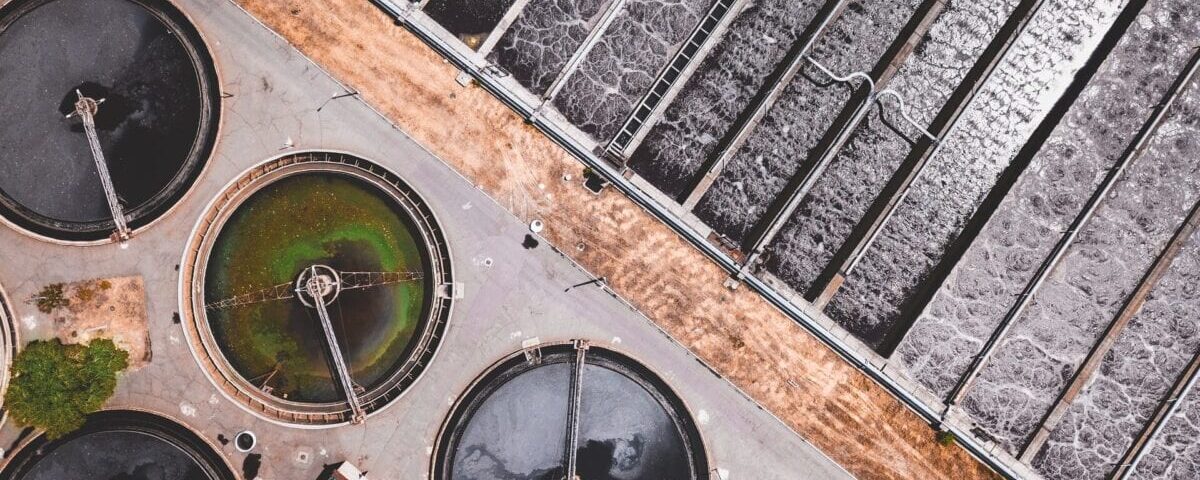
One of the biggest challenges of the twenty-first century is not only providing drinking water and sanitation for everyone on the planet but also making the most of this resource. To achieve this, we must convert water treatment plants into clean, sustainable, efficient sources of resources.
The design for the water treatment plants of the future presents various challenges. Here at Cadagua, we focus on three particular lines of action: digital transformation; the transition to a circular economy, which will allow harnessing the full potential of wastewater; and detecting and eliminating emerging pollutants.
The digital transformation, a first step
The main goal of transforming the water treatment plants as we now know them into more efficient, sustainable systems is to shift them from being considered the origin of a problem (by using resources and generating waste) to becoming part of the solution. One of the big factors in helping reach this end is technology.
The water treatment sector, like so many others, relies on digitization and automation tools to increase the smart aspects of its processes and make them more efficient. Artificial intelligence, Big Data, BIM methodology, the Internet of Things, and hydraulic modelling are just some of the options that can be integrated into treatment plants, purification plants, and desalination plants.
Using these offers twice the benefit. On the one hand, operational costs are reduced, which is good for the business. On the other, the environmental impact is reduced by minimizing the use of resources and mitigating the carbon footprint of its activity.
Circular, smart, and efficient
Conventional sewage treatment plants are currently operating in a linear fashion. These include resources like electricity and wastewater itself, which is loaded with potential in the form of organic matter and nutrients, and other factors like treated water, mud, and waste. In other words, valuable goods come in, and to a large extent, there are problems that need to be disposed of.
Achieving a circular economy means reusing goods as much as possible while minimizing waste generation. One way to achieve this is for plants to operate as biofactories that can harness the potential of their own waste and that of the surrounding industry to generate enough energy to operate autonomously.
They can use industry co-substrates and their own sludge to maximize biogas generation. This biogas can be purified for subsequent injection into the natural gas network. The water-energy link finds one of its strongest potentials in the generation of green hydrogen at the treatment plants themselves, based on renewable energies like biogas or photovoltaics.
In some cases, capturing the resources that are present in the wastewater is key. This is the case with phosphorus, which can be recovered in the form of struvite. This element is finite on our planet and is crucial for agriculture. Therefore, in the not too distant future, recovering phosphorus will be a common practice at sewage treatment plants.
Another usable asset is the regenerated water itself. In some places like Singapore, sewage is already being purified so that it can return directly to the current water cycle. Technically, this is possible: only psychological and, in some contexts, legal barriers hold us back from this possibility.
In the future, thanks to innovation and R&D at wastewater treatment plants, we will be able to extract such a wide range of products as sulphur for the chemical industry, degradable bioplastics, biochar for energy generation, and even construction materials like bitumen and sand.
By using these and other resources, plants become generators of energy and valued by-products. Some of the ways to achieve this are still just plans for the future. Others are already a reality. Cadagua, for instance, operates one of the largest struvite recovery plants in Europe, and it has pilot co-digestion plants where waste from surrounding industries are tested to maximize their energy potential.
The study of emerging pollutants
The third of our lines of action is based on research on emerging pollutants in wastewater. We’re working with the public administration to detect them, analyze their impact on both the environment and human health, and then, if necessary, eliminate them.
These contaminants include drugs, pesticides, herbicides, hygiene products, and even abused drugs. In 2020, a new regulation on water quality intended for human consumption in the European Union was adopted. Among other contaminants, it includes perfluorooctanes (PFOS), compounds that are virtually indestructible by current purification methods, and bisphenol A (BPA). Our objectives include finding out the extent to which they are a problem for the environment and for human health and learning more about their impact.
Over the past few years, methods of analysis have improved greatly. “Magnifiers” are larger, and we can detect the presence of these contaminants even in nanogram concentrations. However, there is still much room for innovation in developing rapid detection sensors, as well as advanced treatment processes.
Thanks to these innovations and processes, the water sector can contribute to the development of more efficient systems and even help achieve some of the UN’s Sustainable Development Goals (SDGs). One of these is Goal 2, ending hunger and ensuring food security, by ensuring quality water that’s free of pathogens and contaminants for both human use and for livestock and agriculture.
The sector can also contribute to achieving SDG 6, ensuring water availability, sustainable water management, and sanitation for all. Then there’s SDG 9, promoting sustainable industrialization and encouraging innovation, as this helps reduce the carbon footprint of the integral water cycle.





There are no comments yet